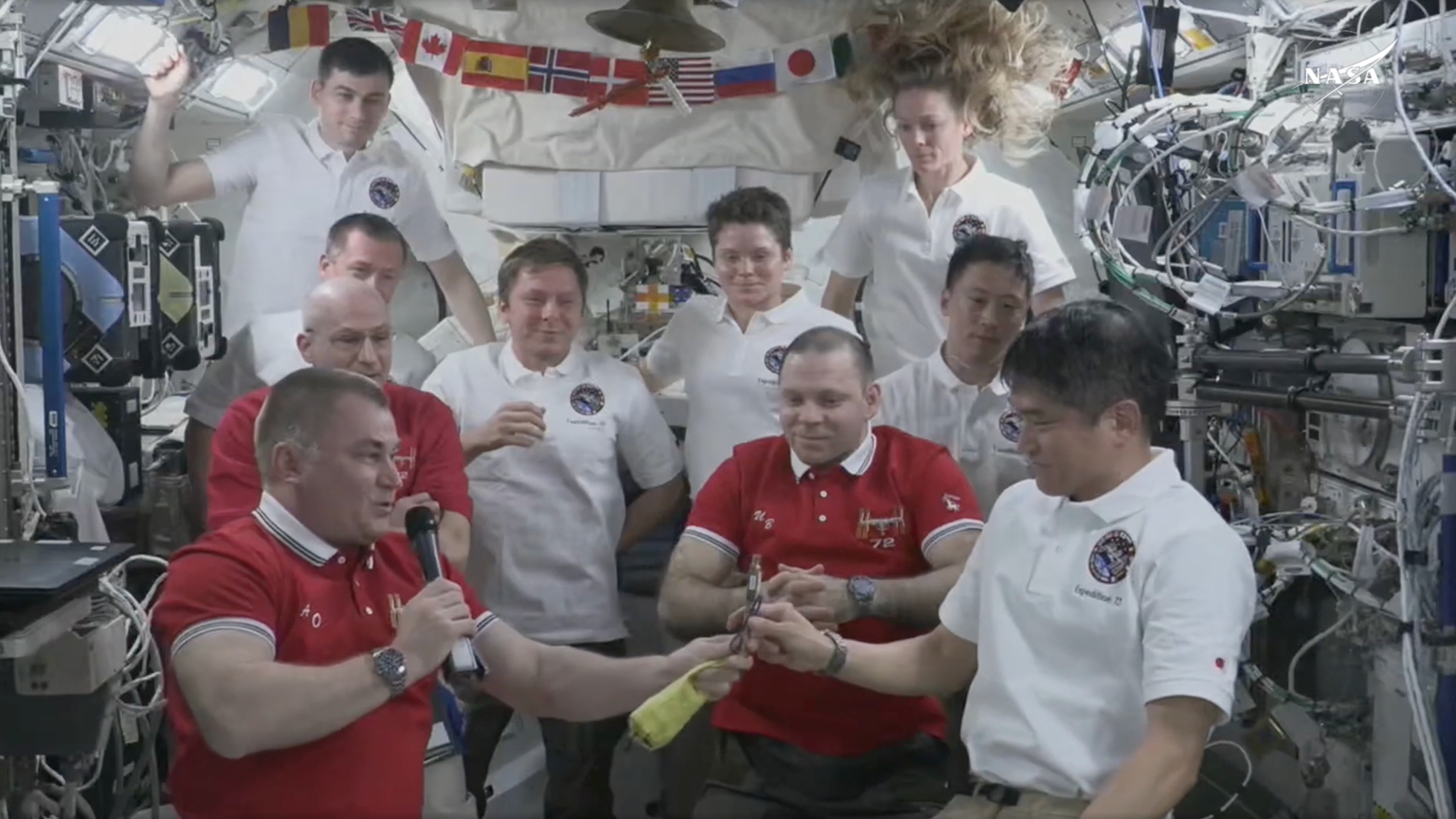No Moon Trips: Obama's Space Vision a 'Paradigm Shift'

This story was updated at 5:41 p.m. ET.
President Obama's plan for America's space program,according to early reports, represents a fundamental shift for humanspaceflight, some experts say.
The reports suggest the Obama administration intends to movetoward relying on commercially-built spacecraft, rather than NASA's ownvehicles, to carry humans to low-Earth orbit. The plan would also involveextending the International Space Station's lifetime and abandoning currentplans to send astronauts on moonmissions by 2020.
"This is definitely a paradigm shift in the way thecountry will go about its space program," said John Logsdon, a spacepolicy expert and professor emeritus at George Washington University inWashington, D.C.
A spokesperson for NASA's Constellation program overseeingthe moon mission work at the Johnson Space Center in Houston told SPACE.comthat it would be premature to make any comments on the agency's future untilafter NASA's spending goals are announced next Monday in Washington, D.C.
Boost to the private sector
The new reliance on the commercialspaceflight industry to take over the duty of ferrying humans back andforth from the space station is particularly significant, experts say.
Get the Space.com Newsletter
Breaking space news, the latest updates on rocket launches, skywatching events and more!
On Wednesday, a senior White House official told two Floridanewspapers (Florida Today and the Orlando Sentinel) that the administrationwould ask for an additional $6 billion over the next five years to help privatecompanies develop this capability. So far, no commercial company has everindependently launched humans into orbit in its own spacecraft.
"The $6 billion shows that they are very serious aboutmaking it a successful and safe program," said Brett Alexander, presidentof the Commercial Spaceflight Federation, a private industry group. "Ithink what they're putting in place is bold and exciting. Bringing commercialand private [companies] into it will reinvigorate human spaceflight."
Alexander said he's confident that industry can rise to thechallenge and meet this new task, and others agree.
"I think the commercial outfits ought to be given achance to succeed," said Leroy Chiao, former NASA astronaut and member ofa blue-ribbon panel President Obama put together last year to review NASA'splans. "The technology to get into low-Earth orbit has been around foralmost 50 years ? it's nothing particularly new."
In fact, the Obama administration's plan is seen by some asfollowing closely one of the possible paths put forward by the panel, which washeaded by Norman Augustine, a retired Lockheed Martin chief executive.
The committee found that NASA was severely underfunded toaccomplish its vision of replacing its space shuttle fleet with new Orionvehicles and Ares rockets. It also suggested that relying on commercially builtspacecraft would allow NASA to focus on more ambitious human spaceflightmissions, like expeditions to a nearby asteroid or the moons of Mars.
Sharp critics
Not everyone agrees with the new plan, though. Former NASAadministrator Michael Griffin, now an eminent scholar at the University ofAlabama, Huntsville, sharply criticized the decision, questioning whether acommercial vehicle will be ready to carry humans to the station anytime soon.
"Today we have in orbit a $75 billion InternationalSpace Station, a product of the treasure and effort of 15 nations, and thepresident is recommending that we hold its future utility and, indeed, its veryexistence hostage to fortune, hostage to the hope that presently nonexistentcommercial spaceflight capability can be brought into being in a timely way,following the retirement of the Space Shuttle," Griffin said in astatement.
And others are unhappy that the Obamaspace plan would potentially cause the loss of many NASA jobs if thebusiness of launching humans into space is handed over to the private sectorafter the space shuttles retire.
"For Florida it would be devastating in the shortterm," Roger Handberg, a political scientist at the University of CentralFlorida who has written extensively on space policy. "If NASA goes intorelative decline or suspension of manned launches, we're going to be in a hole.
Florida senator Bill Nelson (D-Orlando) has also come outagainst the plan, and other politicians from states that would lose jobs arealso likely to fight the proposal. President Obama intends to officiallyannounce his plans for space when he submits his federal2011 budget request Monday, which will include his request for NASAfunding.
Some say to wait until then to judge the plan.
"Most of what we're reading in the media right now arerumors and I think we really would do a disservice to ourselves if we jumped toconclusions," Chiao said.
What about the moon?
One of the major questions about the new plan is what willhappen to the goal of returning people to the moon. Opinion is split on whetheror not Obama plans to completely scrap the Constellation program, which isNASA's current vision for spaceexploration. Under the program, work has already begun to design a newrocket, Ares I, and crew capsule, Orion, to carry astronauts to the moon andbeyond. The first test launch of that booster went off successfully in October2009.
"I think it would be premature to say thatConstellation is going to end," Chiao told SPACE.com. "What I thinkwould be more probable is that there would be some variation on currentplans."
But others take a dimmer view.
"Constellation is dead," Logsdon said. Yet heemphasized that that doesn't mean America won't go back to the moon. It justwon't go back on the schedule and vision laid out by President Bush in 2004.
"The 'vision' to return to the moon that has beenguiding NASA since 2004 was always an inadequately funded fantasy," saidJoan Johnson-Freese, chair of the Department of National Security Studies atthe Naval War College in Newport, R. I. "One of the goals of the Obamaspace plan appears to be to give NASA the opportunity to build and use enduringhardware ? rather than an impulsive and unrealistic return-to-the-moon on ashoestring plan."
While the shift in policy may take some adjusting to, someare hopeful that it will allow America to retain its leadership as aspace-faring nation.
"Any large organization doesn't necessarily like changeso it's not surprising that people are concerned and worried," Chiao said.
"But change always brings opportunity. I'm cautiouslyoptimistic."
- President Obama to Propose Abandoning NASA's Moon Plan
- Video Show - NASA's Vision for Humans in Space
- Just 5 Missions Left for NASA's Space Shuttles
Join our Space Forums to keep talking space on the latest missions, night sky and more! And if you have a news tip, correction or comment, let us know at: community@space.com.

Clara Moskowitz is a science and space writer who joined the Space.com team in 2008 and served as Assistant Managing Editor from 2011 to 2013. Clara has a bachelor's degree in astronomy and physics from Wesleyan University, and a graduate certificate in science writing from the University of California, Santa Cruz. She covers everything from astronomy to human spaceflight and once aced a NASTAR suborbital spaceflight training program for space missions. Clara is currently Associate Editor of Scientific American. To see her latest project is, follow Clara on Twitter.









